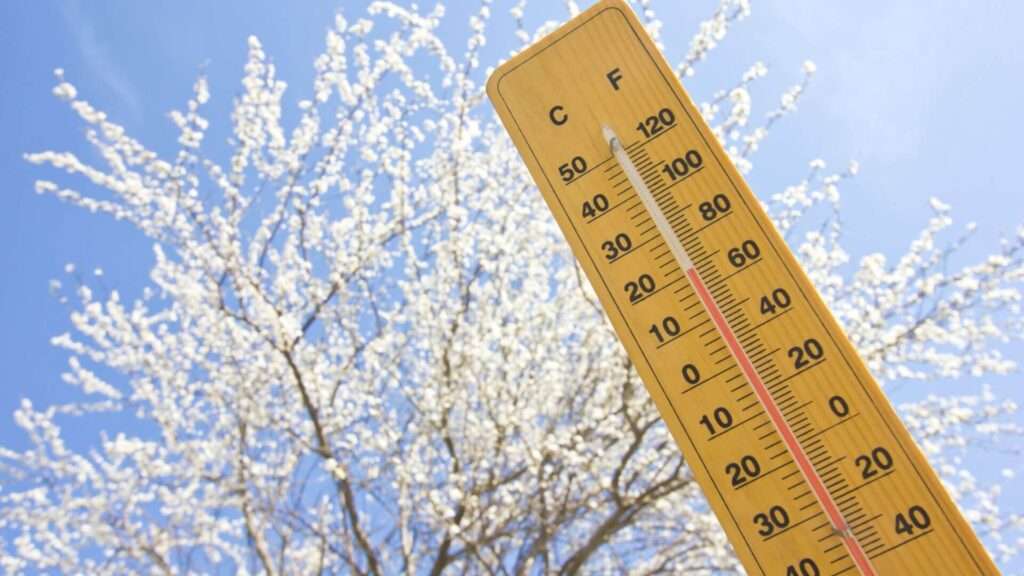Cloudiness, wind, snow, storms, heat waves… are meteorological phenomena that, at a given time, can develop anywhere on the planet. Some, like rain, are essential for our own survival, and others, like a spectacular rainbow, give us beautiful optical effects. There are also those that demonstrate the devastating power of nature causing serious natural disasters.
If you want to know what the most common meteorological phenomena are and also get closer to the most extreme meteorological phenomena, in this OneHOWTO article we tell you what meteorological phenomena are and examples of the best known or relevant ones.
What are weather phenomena?
A meteorological phenomenon is considered to be any observable event or circumstance that occurs naturally in the Earth’s atmosphere, specifically in the troposphere, the layer of the atmosphere closest to the Earth’s surface.
These atmospheric phenomena are due to various factors that affect the troposphere. Among them, the air circulation itself stands out, which constantly moves in the form of currents and air masses at different temperatures. There are also others, such as solar radiation, atmospheric pressure, geographical factors (latitude), sea currents, and the relief or the vegetation of a certain area. All these factors interact and produce changes that are translated into different meteorological phenomena.
Knowing how meteorological phenomena occur is important not only to better understand the hidden rules of nature that surround us but also to realize the importance of caring for the environment, since climate change may be behind the increase in some extreme weather events.
Examples of the most common weather phenomena
There are different types of meteorological phenomena taking into account their characteristics (optical, hydric and atmospheric), as well as their intensity and impact on nature and human activity. In a very basic classification, we find those considered normal, which occur regularly and do not usually cause damage; and adverse or extreme phenomena, which are unusual and can cause material damage and even endanger human life.
The greater or lesser presence of clouds in the sky (cloudiness) is probably one of the most common weather phenomena. The terrestrial irradiation itself causes the air to heat up and the water in rivers and seas to evaporate little by little. This water vapor rises until it reaches the coldest layers of the troposphere, where it condenses into tiny droplets that form clouds. These move freely and give rise to other common weather phenomena such as:
- Rain: occurs when the drops formed by the condensation of water vapor become larger and end up falling on the ground.
- Snow: It is the same rain that solidifies in its fall when temperatures are below zero degrees.
- Fog: the combination of temperature and atmospheric pressure, and the insufficient weight of the tiny water droplets, mean that they do not finish falling and remain floating in the layers closest to the Earth.
- Wind : it is a common meteorological phenomenon that is produced by the difference in temperature and pressure between different air masses. Hot air ‘weighs’ less and tends to rise, while cold air tends to fall. This circumstance generates a constant movement that gives rise to more or less intense winds.
- Storm: in principle, a storm does not have to be an adverse phenomenon, unless it acquires a high intensity. Its origin stems from a specific type of cloud, the cumulonimbus, which, in certain circumstances of sudden changes in pressure and temperature, end up discharging all the rain concentrated in them, also producing other phenomena, such as lightning and thunder.
If you want to know more about what common weather phenomena are, you can take a look at our articles on How a storm is made and How water turns into the air.
Examples of extreme weather events
Strange or extreme weather events are those that occur less frequently. In them, temperatures, precipitation, or the force of the wind generate situations that imply a certain degree of danger for people and their environment. Some that we can suffer and that have gained prominence in recent years due to climate change are:
- DANA or cold drop: this is an Isolated High-Level Depression (DANA) and occurs when a very cold air mass falls off and ‘collides’ with a warm air mass causing a serious atmospheric disturbance. Torrential rains, hail, and strong winds are phenomena that it carries with them.
- Hurricanes, typhoons, and tornadoes: a hurricane is a cyclone, that is, a powerful wind that exceeds 120 km per hour and moves in a spiral. The lower the atmospheric pressure in the eye of the hurricane, the greater its destructive power. If they originate in the oceans (generally in the Pacific), they are called typhoons. For its part, the tornado is a column of air that rotates at high speed (it can exceed 400 km/h) and its end is in contact with the earth.
- Waves of cold or heat: unfortunately they are becoming more frequent and are characterized by the presence of extreme temperatures, high or low. A wave is considered when the period of abnormal temperatures lasts for 7 days or more.
If you want to know more about what extreme weather events are and how they occur, we encourage you to learn How a hurricane occurs or to know What are the main effects of climate change.
If you want to read more articles similar to What are meteorological phenomena and examples, we recommend you visit our Training category.


